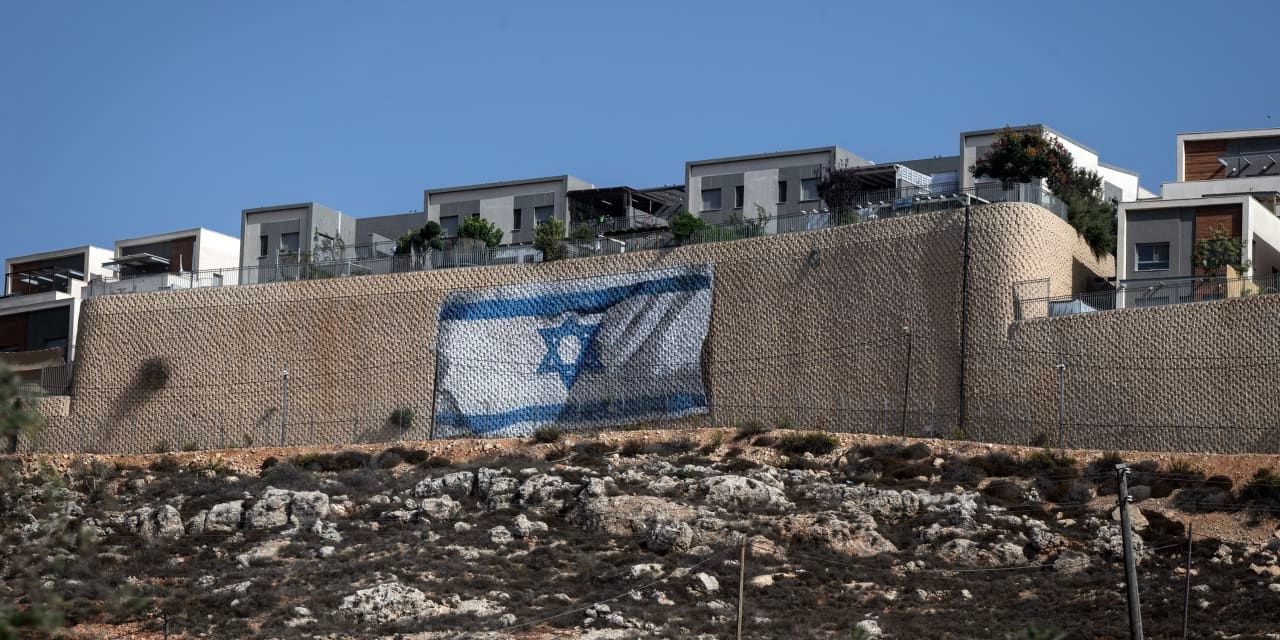
What is the West Bank? The West Bank, a landlocked territory in the Middle East, is a significant piece of the Israeli-Palestinian conflict puzzle. Nestled between Israel and Jordan, it spans about 5,660 square kilometers, roughly the size of Delaware. Home to over 4 million people, including nearly half a million Israeli settlers, the West Bank is a region of rich history and ongoing tension. From its limestone hills to its complex political landscape, the West Bank is a place where geography and geopolitics collide. Understanding its intricacies is key to grasping the broader Middle Eastern dynamics.
Geographical and Demographic Overview
The West Bank is a region rich in history and complexity. Understanding its geography and demographics is essential to grasping its significance.
-
Geographical Location: The West Bank lies west of the Jordan River, bordered by Israel to the west and Jordan to the east. It's about the size of Delaware, covering 5,660 square kilometers (2,185 square miles).
-
Population: As of 2024, the West Bank's population is estimated at 4,137,000, including around 468,300 Israeli settlers.
-
Official Names: Known as West Bank in English, Al-Ḍaffah al-Gharbīyah in Arabic, and Ha-gadah Ha-maʾaravit in Hebrew.
Historical Context
The West Bank's history is marked by conflict and change, shaping its current status.
-
History: Part of the British Mandate of Palestine from 1920 to 1947, it was occupied by Jordan after the 1948 Arab-Israeli War until Israel captured it in the 1967 Six-Day War.
-
Current Status: Under Israeli military occupation, the Palestinian Authority has limited autonomy in Area A, including cities like Ramallah and Nablus.
Settlements and Geography
The landscape and settlements in the West Bank are key to understanding the region's ongoing tensions.
-
Settlements: Approximately 430,000 Israeli Jews live in 132 settlements and 124 smaller outposts, excluding East Jerusalem.
-
Geography: Characterized by north-south limestone hills, known as the Samarian Hills north of Jerusalem and the Judaean Hills south of Jerusalem, averaging 2,300 to 3,000 feet (700 to 900 meters) in height.
Climate and Economy
The West Bank's climate and economic conditions impact daily life and development.
-
Climate: Varies significantly, with annual rainfall from over 27 inches (685 mm) in the northwest to less than 4 inches (100 mm) in the southwest and southeast, near the Dead Sea.
-
Economy: Industrial development was weak during the Jordanian period and further constrained under Israeli occupation. Investment capital remains scarce, though transportation infrastructure has improved mainly for military reasons.
Principal Municipalities and Education
Key cities and educational institutions play vital roles in the West Bank.
-
Principal Municipalities: Major Palestinian municipalities include Jenin, Nablus, Ramallah, Bethlehem, and Hebron (Al-Khalīl).
-
Education: Seven universities operate in the West Bank, including Bethlehem University, Birzeit University, An-Najah National University, Hebron University, Al-Quds University, the Arab American University, and Ariel University (located in an Israeli settlement).
-
Literacy Rate: High literacy rate of 94.6% among the population aged 15 and over.
Population Growth and Demographics
The West Bank's population dynamics reveal much about its social structure.
-
Population Growth: One of the highest in the world, with an estimated 3.4% annual growth rate.
-
Demographics: Predominantly Palestinian Arab, with about 92% identifying as Sunni Muslims. Significant numbers of Christians and other minorities also reside here.
-
Refugees: Around 583,000 Palestinians are registered refugees from the 1948 war, many living in refugee camps.
Health and Economic Indicators
Health and economic challenges are significant in the West Bank.
-
Health Concerns: Underdevelopment, occupation legacy, and political turbulence restrict access to health and medical facilities, especially for pregnant women and children.
-
Economic Indicators: The economy has faced challenges, including a decline in real per capita GDP by over 36% during the early peace process years. Poverty rate was 21% in September 2000, and unemployment rose to 40% during the first three months of the 2000 Palestinian uprising.
Infrastructure and Movement
Infrastructure and movement restrictions shape daily life in the West Bank.
-
Road System: Highly fragmented, with many roads built by Israel to facilitate settler movement while restricting Palestinian movement, creating an apartheid-like network.
-
Checkpoints: Numerous checkpoints and barriers impede movement, causing delays and difficulties in accessing basic services like healthcare and education. Confiscation of Palestinian identity cards at checkpoints is common.
Education and Water Resources
Education and water resources are critical issues in the West Bank.
-
Education Expenditures: Account for 5.3% of GDP, relatively high compared to other regions.
-
Water Resources: Limited renewable water resources, with a total of 840 million cubic meters available annually. Actual water withdrawal is significantly higher, with municipal, industrial, and agricultural uses totaling 450 million cubic meters annually.
Cultural and Political Aspects
Cultural heritage and political tensions are integral to the West Bank's identity.
-
World Heritage Sites: Home to four World Heritage Sites, including Ancient Jericho/Tell es-Sultan, the Birthplace of Jesus: Church of the Nativity and the Pilgrimage Route, Bethlehem, Hebron/Al-Khalil Old Town, and the Land of Olives and Vines – Cultural Landscape of Southern Jerusalem, Battir.
-
Capital City: Palestinians claim Jerusalem as their capital, but Ramallah serves as the de facto capital of the West Bank, and Gaza City serves as the de facto capital of Gaza.
Social Structure and Challenges
The social structure and challenges faced by the West Bank's population are complex.
-
Age Structure: Significant proportion of young people, with 36.7% of the population under 14 years old. The median age is 21.9 years.
-
Dependency Ratios: Total dependency ratio is 74.3, indicating high dependency on working-age individuals. Youth dependency ratio is 68.2, and elderly dependency ratio is 6.1.
-
Child Marriage: Significant issue, with 0.7% of women married by age 15 and 13.4% married by age 18.
Israeli Settlements and Annexation Efforts
Israeli settlements and annexation efforts are major points of contention.
-
Israeli Settlements: A major point of contention in the Israeli-Palestinian conflict. These settlements are illegal under international law and a significant obstacle to peace negotiations.
-
Annexation Efforts: Ongoing efforts by Israel to annex parts of the West Bank have met strong opposition from the international community and the Palestinian Authority.
Recent Tensions and International Involvement
Recent tensions and international involvement highlight the ongoing conflict.
-
Recent Tensions: Heightened tensions in recent years, including a wave of attacks on Israelis in early 2022, leading to frequent raids by the Israeli Defense Forces (IDF) in cities like Jenin and Nablus.
-
International Involvement: The international community actively seeks to resolve the Israeli-Palestinian conflict through various peace initiatives and diplomatic efforts aimed at finding a lasting solution to the dispute over the West Bank.
The West Bank: A Complex Tapestry
The West Bank is a land of contrasts and complexities. With its rich history, diverse population, and ongoing political tensions, it remains a focal point in the Middle East. From the limestone hills to the bustling cities like Ramallah and Nablus, the region is a blend of ancient traditions and modern challenges. Israeli settlements, checkpoints, and limited autonomy for Palestinians add layers to its already intricate situation. Despite economic hardships and health concerns, the West Bank's high literacy rate and educational institutions highlight the resilience of its people. International efforts continue to seek a peaceful resolution, but the path remains fraught with obstacles. Understanding the West Bank requires acknowledging its multifaceted nature, where every fact contributes to a broader narrative of struggle, survival, and hope.
Was this page helpful?
Our commitment to delivering trustworthy and engaging content is at the heart of what we do. Each fact on our site is contributed by real users like you, bringing a wealth of diverse insights and information. To ensure the highest standards of accuracy and reliability, our dedicated editors meticulously review each submission. This process guarantees that the facts we share are not only fascinating but also credible. Trust in our commitment to quality and authenticity as you explore and learn with us.


